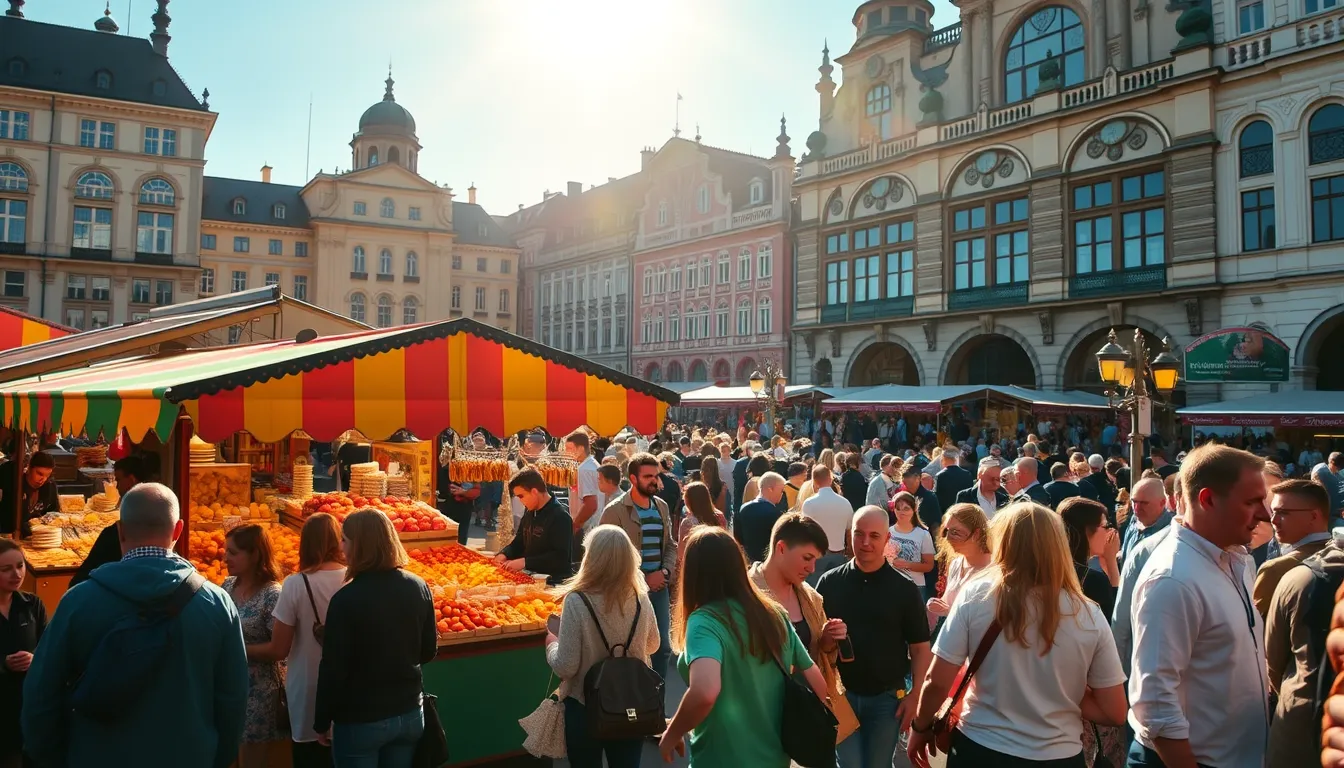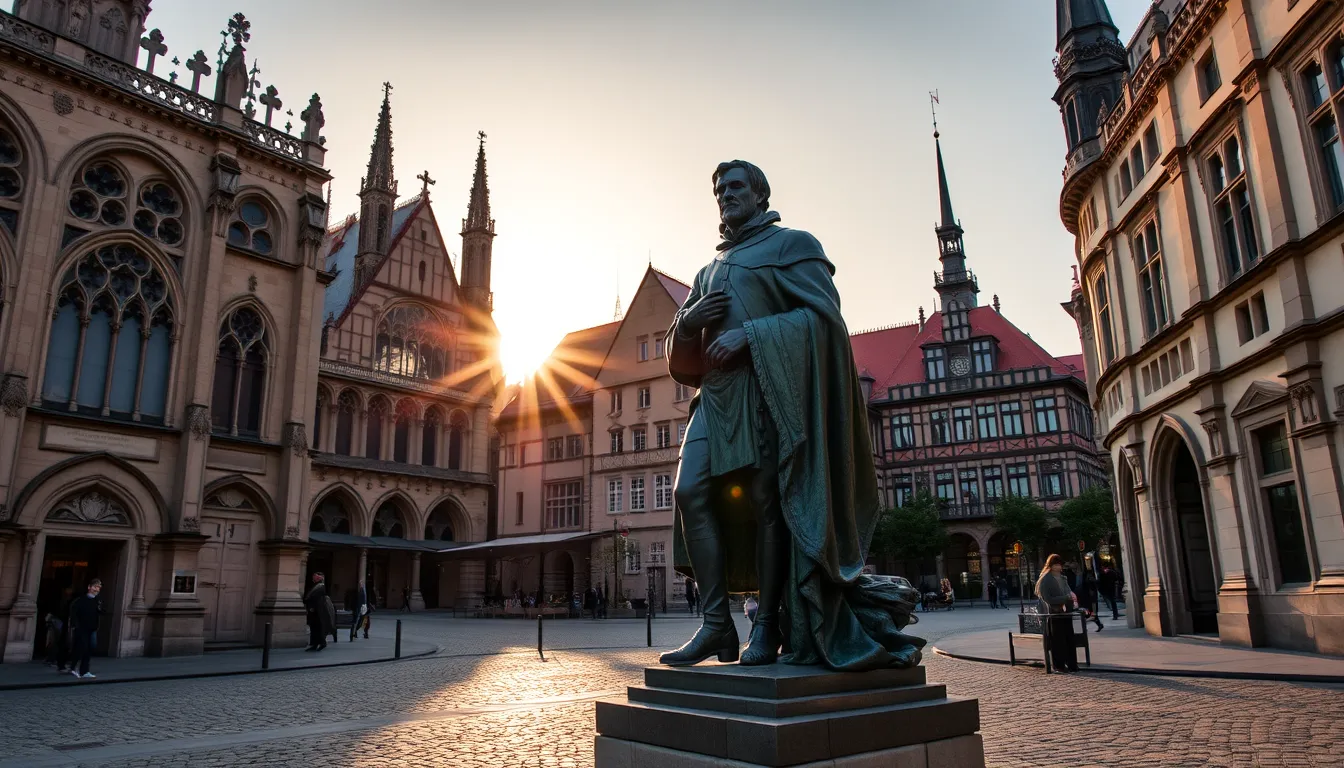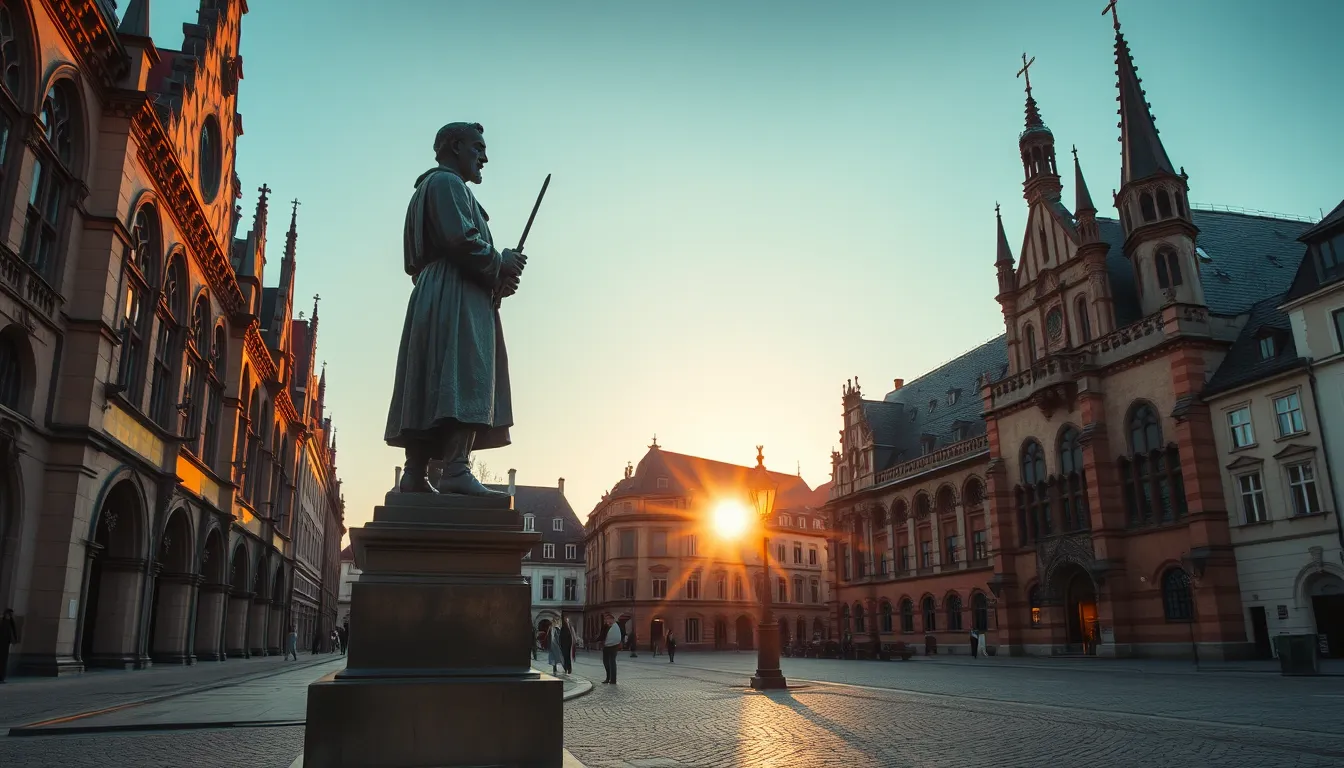Lviv, a cultural gem nestled in western Ukraine, holds a special place in the world of heritage preservation, recognized for its remarkable architectural ensemble and vibrant history. Designated as a UNESCO World Heritage Site in 1998, the historic center of Lviv embodies a unique blend of Eastern European and Central European influences, showcasing the city’s evolution over centuries through its buildings, streets, and public spaces.
What sets Lviv apart is its extraordinary architectural diversity, which reflects various styles including Gothic, Renaissance, Baroque, and Classicism, all coexisting harmoniously. This eclectic mix is a testament to the city’s multicultural history, where Poles, Ukrainians, Armenians, Jews, and Austrians have all left their mark. The city’s architectural and urban planning reflects not just its aesthetic appeal but also its historical significance, illustrating the various socio-political changes in the region over the years.
Lviv’s inscription on the UNESCO World Heritage list underlines its importance as a cultural crossroads, where trade, politics, and religion have intersected since its founding in the 13th century. UNESCO highlights its well-preserved historical town layouts, particularly its public squares like the Market Square (Rynok), which have been central to the social fabric of Lviv for centuries.
The significance of Lviv’s heritage also stems from its role as a center for arts and education. It has been a hub for intellectual thought and cultural dialogue, influencing not just Ukraine but the greater region as well. The preservation of this cultural landscape is vital not only for historical reflection but also for future generations to understand and appreciate the rich tapestry of influences that shaped the area.
As visitors explore Lviv, they become part of its enduring legacy, experiencing firsthand the beauty of its historical sites, local traditions, and vibrant culture. Lviv stands as a living testament to the importance of heritage conservation, serving as a reminder of the diverse roots that contribute to its identity today.
Historical Context of Lviv’s Architecture
The architectural history of Lviv is a fascinating tapestry woven from various threads of influence, each contributing to the city’s distinctive character. Founded in the 13th century by King Daniel of Galicia, Lviv emerged as a significant urban center along trade routes connecting the East and the West. The early architecture of the city was primarily influenced by Gothic styles, evident in structures like the Church of St. Nicholas and the remains of medieval fortifications that reflect the defensive needs of the time.
As Lviv flourished, its design and construction adopted elements from prevailing styles of the Renaissance and Baroque periods, which saw the introduction of ornate façades and grand public buildings. Noteworthy examples include the Latin Cathedral, a striking representation of the Gothic and Renaissance styles, and the stunning Armenian Cathedral, which showcases intricate details characteristic of Armenian ecclesiastical architecture. This exchange of ideas and styles highlights Lviv’s role as a favorable meeting point for diverse cultures and artistic movements.
The city was later influenced by the Austro-Hungarian Empire’s architectural trends in the 19th century, which introduced elements of neoclassicism and eclecticism to the urban layout. Buildings like the Lviv Opera House stand as masterpieces from this era, celebrated not just for their architectural grandeur but also for their cultural significance in the arts. The historic center of Lviv, with its well-preserved Baroque and Classicist structures, provides an intriguing glimpse into the city’s social dynamics during the period of Habsburg rule, as public squares and palatial homes emerged as façades for both commerce and community.
In addition to its landmark buildings, the layout of Lviv is equally important in understanding its architectural significance. The city’s irregular street patterns and the prominent Rynok Square were historically key meeting points for merchants and citizens alike, facilitating vibrant social exchanges. This planning is further echoed in the various guildhalls and market stalls surrounding the square, a reminder of the city’s bustling trade networks that were foundational to its economic growth and cultural exchange.
With the advent of the 20th century, Lviv continued to evolve, although faced with the challenges of two world wars and shifting borders. Thankfully, many of its architectural jewels remained intact, allowing for the city to be recognized by UNESCO as a World Heritage Site. Today’s visitors can appreciate this architectural rich tapestry, which speaks not only to Lviv’s past but also to the ongoing narrative of its people—a narrative marked by resilience, creativity, and an enduring respect for the city’s heritage.
Top UNESCO World Heritage Sites in Lviv
Lviv boasts several UNESCO-designated sites that reflect its rich historical and cultural significance. Among these, a few major landmarks stand out, each with stories that intertwine with the city’s development through centuries.
Market Square (Rynok Square): The heart of Lviv, the Market Square, is an architectural gem and a historical hub. Established in the 13th century, it is surrounded by over 40 ornate buildings reflecting various architectural styles, including Gothic, Renaissance, and Baroque. Notable sites within the square include the magnificent City Hall, whose tower allows visitors panoramic views of the city, and the Old Town Hall, with its rich history etched into every brick. The square has long been a center for commerce and social gatherings, pulsating with life through open-air markets and cultural events.
Latin Cathedral: Known as the Cathedral of Assumption of the Blessed Virgin Mary, the Latin Cathedral stands as a stunning example of Gothic and Renaissance architecture, completed in the 17th century. Its grand interior is adorned with numerous chapels, intricate frescoes, and sculpted altars that showcase the lavish artistry of the period. Visitors are often enchanted by the serene atmosphere of the cathedral, which serves not only as a place of worship but also as a reminder of Lviv’s rich religious history and multicultural heritage.
Armenian Cathedral: A symbol of the Armenian community’s long-standing presence in Lviv, the Armenian Cathedral dates back to the 14th century. Its unique architecture combines elements of Eastern Christian traditions with local styles, characterized by a stunningly decorated exterior and interior. Inside, visitors can admire exquisite frescoes and wood carvings, creating a mystical atmosphere that resonates with the city’s diverse cultural narratives. This cathedral is vital for understanding the multicultural influences that shape Lviv’s heritage.
Potocki Palace: Another remarkable site is the Potocki Palace, an exquisite example of Parisian Baroque architecture located just a short walk from the Market Square. Constructed in the 19th century as the residence of the Potocki family, the palace impresses visitors with its opulent interiors, grand staircases, and stunning gardens. Today, it houses the Lviv National Gallery, showcasing an incredible collection of Ukrainian and European art.
Lviv Opera House: As one of Lviv’s most prominent landmarks, the Lviv Opera House is a dazzling representation of 19th-century architecture that draws admirers for its grandeur. Opened in 1900, the opera house is not only an architectural masterpiece but also a cultural cornerstone for performances in opera and ballet. Visitors can indulge in a night out at the opera, enjoying lavish productions in a setting that radiates charm and history.
These outstanding sites, along with the vibrant streets and squares of Lviv, exemplify the city’s rich heritage recognized by UNESCO. By delving into their histories, visitors can grasp the fabric of a city where diverse cultures, stories, and architectural styles coalesce, creating a framework for lively exploration and appreciation.
Exploring the Historic Center of Lviv

Exploring the historic center of Lviv is akin to stepping into a living museum where each cobblestone and façade tells a story of centuries gone by. The enchanting streets are lined with vibrant cafés, artisan shops, and stunning architecture that reflect the city’s illustrious past and multicultural heritage.
As you meander through Lviv’s charming avenues, a must-visit destination is Market Square (Rynok Square). This bustling hub has been the focal point of community life since the city’s founding. The lively atmosphere is infectious, with local vendors peddling their wares, street performers captivating crowds, and visitors sampling traditional Ukrainian snacks from food stalls. The square is bordered by remarkable buildings, each with its own unique story. For instance, the House of Scientists, once a private residence, now serves as a cultural center that hosts events and exhibitions, providing insight into the city’s artistic legacy.
Another essential site in the historic center is the Latin Cathedral, an architectural marvel that invites visitors to appreciate its Gothic and Renaissance intricacies. Make sure to step inside, where the air is filled with sublime artistry including splendid sculptures and vibrant stained glass windows that illuminate the calm atmosphere. Participating in a local guided tour can enhance your understanding of the cathedral’s significance in Lviv’s religious and cultural landscape.
Strolling through Lviv also leads you to the Armenian Cathedral, a tranquil oasis that harmonizes the city’s diverse religious heritage. After exploring its intricate interior, consider taking a moment to sit in the adjoining courtyard, where the peaceful surroundings invite reflection on the many cultures that have contributed to the fabric of Lviv. The cathedral often features exhibitions showcasing Armenian art, offering an enriching cultural experience that speaks to the city’s historical connections.
For art enthusiasts, the Potocki Palace is a highlight not to be missed. The grand structure, originally built for the affluent Potocki family, now serves as an art gallery where you can find remarkable works from both Ukrainian and European artists. Its opulent interiors, adorned with classic furnishings and beautiful works of art, transport you back to a time of noble elegance. Guided tours provide in-depth commentary, bringing the palace’s art collection and history to life.
The Lviv Opera House captures the hearts of visitors not just for its stunning architecture but also for the rich cultural experiences it offers. Attending a performance here is a delightful way to engage with local culture. With lavish performances of opera and ballet taking place amidst opulent surroundings, it’s an experience that resonates well beyond the curtain call.
Navigating the historic center is made easy by the city’s compact layout which allows for effortless transitions between its various landmarks. You can take breaks in one of the many charming parks or plazas scattered throughout the city, which are perfect for enjoying a coffee or simply soaking in the atmosphere.
Engaging with the local residents can also enhance your experience; many take pride in their city’s UNESCO status and are delighted to share stories and recommendations. Whether you find yourself wandering down historic streets, relishing a meal at a traditional bistro, or learning about local customs, every moment spent in Lviv’s historic center is steeped in the rich heritage that defines this captivating city.
Cultural Experiences and Activities
Cultural experiences in Lviv are as rich and diverse as the city’s monumental heritage itself. As a UNESCO World Heritage Site, Lviv offers a plethora of activities that immerse visitors in its vibrant traditions and artistic expressions. From historical cafes that echo with the whispers of famous intellectuals to lively festivals celebrating Ukrainian culture, the city stands as a testament to the beautiful intertwining of its historical narrative and contemporary life.
One of the best ways to experience the local culture is through Lviv’s charming coffee houses, which have become an integral part of the city’s social fabric. Places such as Vyshyvanka Cafe not only serve expertly brewed coffee but also offer a cozy environment where visitors can enjoy traditional pastries like pampushky (sweet buns) while surrounded by local art and music. This café, adorned with folk motifs and embroidery, captures the essence of Lviv’s artistic lineage, providing a perfect backdrop for a leisurely afternoon.
Music is another vibrant aspect of Lviv’s cultural identity. The city boasts numerous venues where you can listen to live performances. For a true taste of local sounds, check out the Leopolis Jazz Fest, an annual event that attracts renowned jazz musicians from around the world. This celebration not only highlights the city’s appreciation for jazz but also showcases the city’s ability to blend modern genres within its historic realms, creating a unique cultural dialogue.
Street Art enthusiasts will find Lviv a treasure trove of creative expression. The city’s walls are adorned with vibrant murals that tell the stories of its people, history, and cultural identity. Take a stroll through the Pidhirna Street area, where you will find embellished facades and modern artwork that harmonize with ancient architecture. Notably, local artists occasionally conduct guided tours to illustrate the inspiration behind their work, providing deeper insights into this contemporary cultural phenomenon.
For those interested in traditional Ukrainian crafts, Lviv offers workshops where visitors can create their own masterpieces. Places like the Potocki Palace often host art classes, including pottery, painting, and textile weaving. Participants not just learn new skills but also engage in the cultural dialogue about heritage preservation and the significance of the arts in Ukrainian society. Such hands-on experiences are a wonderful way to connect with Lviv’s dynamic past while creating memorable souvenirs that embody the spirit of the city.
Festivals are also a vital component of Lviv’s cultural scene, with numerous celebrations taking place throughout the year. The Vyrsovyi Festival, dedicated to Ukrainian folk culture, features performances by traditional dance troupes and showcases local cuisine, music, and crafts. This lively event is a wonderful opportunity to immerse yourself in Ukrainian heritage, connecting with locals and fellow travelers through joyous celebrations of tradition.
Exploring Lviv’s cultural experiences can also lead you to historical attractions like the National Museum in Lviv, which hosts exhibitions that highlight the rich tapestry of Ukrainian history, art, and heritage. The museum often features special events, including guest lectures from historians and artists, providing context to the artifacts on display and encouraging a dialogue about their relevance in today’s society.
Do not miss opportunities to engage with locals who are often eager to share their culinary delights, folklore, and tales related to Lviv’s rich heritage. Restaurants and street vendors alike offer traditional dishes such as borscht and varenyky (dumplings), which provide a delightful taste test of Lviv’s culinary landscape. Join a food tour for a guided tasting experience that will take you off the beaten path to discover hidden gems and cherished local recipes.
All these dimensions of cultural life in Lviv not only highlight its UNESCO World Heritage significance but also ensure that visitors leave with an enriched understanding of the city’s unique narrative. The lively atmosphere, filled with the sounds of music, laughter, and conversation, invites everyone to become a part of Lviv’s ongoing story, reflecting its past while weaving new threads into its future.
Practical Tips for Visiting Lviv
Visiting Lviv provides a unique opportunity to experience the rich, vibrant culture of this UNESCO World Heritage city. Here are some practical tips to make the most out of your adventure in Lviv.
Getting Around
The compact nature of Lviv’s historic center makes it easy to explore on foot. An enjoyable walk can lead you to many of the top sites such as Rynok Square, the Latin Cathedral, and the Lviv Opera House. For longer distances, consider using the city’s public transportation system, which includes trams and buses. Tickets are affordable and can be purchased at kiosks or from the driver.
Language
While Ukrainians generally speak Ukrainian, many also understand and speak English, especially in tourist areas. Familiarizing yourself with a few basic phrases in Ukrainian can enrich your experience. Here are some useful phrases:
- Доброго дня (Dobroho dnya) – Good day
- Дякую (Dyakuyu) – Thank you
- Так (Tak) – Yes
- Ні (Ni) – No
Culinary Delights
Lviv is known for its rich culinary scene influenced by various cultures. Be sure to try traditional Ukrainian dishes such as varenyky (dumplings) and borscht (beet soup) at local eateries. If you’re a fan of coffee, don’t miss out on the coffee houses, such as Legendary Lviv Coffee Mine, where the experience is as pleasing as the brew itself. Additionally, explore the local markets for fresh produce and handmade goods, which can provide insight into daily life in Lviv.
Cultural Etiquette
Ukraine is known for its warm hospitality, and Lviv is no exception. When visiting churches or other religious sites, be respectful of local customs, such as dressing modestly. It’s a good practice to ask permission before taking photos of people, especially in cultural or sacred settings.
Timing Your Visit
The best times to visit Lviv are during the spring (April to June) and fall (September to October) when the weather is mild, and the city is alive with festivals. The Vyrsovyi Festival providing an exhibition of traditional Ukrainian music and cuisine typically takes place in June, drawing locals and tourists alike. During these periods, you can witness the city’s dynamic spirit at its best.
Local Guides and Tours
To gain a deeper understanding of Lviv’s rich history, consider joining a guided tour. Various options are available, from walking tours focused on architectural heritage to culinary tours that delve into local cuisines. Engaging with local guides not only enriches your knowledge but also supports the community. Many tours are offered in English, making them accessible for international visitors.
Safety and Health
Lviv is generally safe for tourists, but, like any major city, it’s wise to stay aware of your surroundings and keep your belongings secure. It’s advisable to drink bottled water and be cautious when sampling street food. Make sure to have travel insurance that covers health emergencies while exploring this picturesque city.
Lviv’s rich heritage, combined with its lively atmosphere, charming streets, and beautiful architecture, guarantees an unforgettable experience. With these practical tips, you will be well-prepared to dive into the cultural tapestry and historical wonders that Lviv has to offer.


